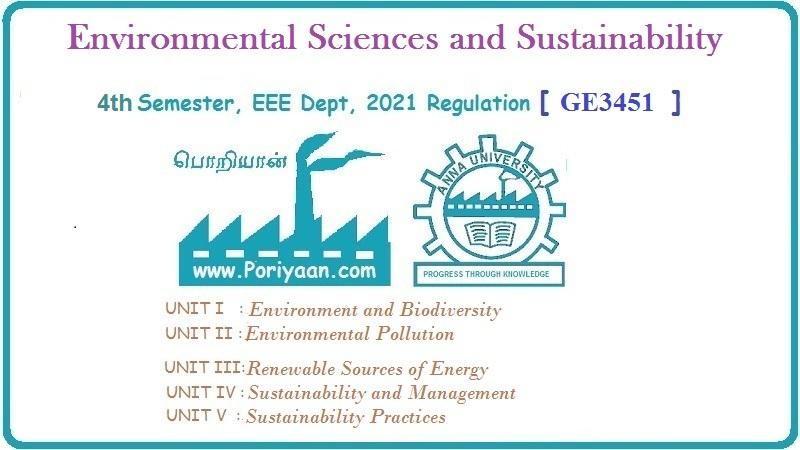Environmental Sciences and Sustainability: Unit V: Sustainability Practices
Sustainable Habitat
Definition, Principle, Planning, Advantages of Green Building
A Green building focuses on increasing the efficiency of resource use - energy, water and materials - while reducing building impact on human health and the environment during the building’s lifecycle, through better sitting, design, construction, operation, maintenance and removal.
Sustainable Habitat
•
Sustainable Habitat is defined as an approach towards a balanced and
sustainable development of the ecosystem of habitat which offers adequate
shelter with basic services, infrastructure, livelihood opportunities along
with environmental and socio-economic safety including equality, inclusiveness
and disaster-resilience.
1. Green Building
•
A Green building focuses on increasing the efficiency of resource use - energy,
water and materials - while reducing building impact on human health and the
environment during the building’s lifecycle, through better sitting, design,
construction, operation, maintenance and removal.
•
Green Buildings should be designed and operated to reduce the overall impact of
the built environment on its surroundings.
•
Green buildings are designed to reduce the overall impact of the built
environment on human health and the natural environment by :
1.
Efficient use of energy, water and other resources.
2.
Protecting occupant health and improving employee productivity.
3.
Reducing waste, pollution and environmental degradation.
•
Effective green buildings are more than just a random collection of
environmental friendly technologies, however.
•
They require careful, systemic attention to the full life cycle impacts of the
resources embodied in the building and to the resource consumption and
pollution emissions over the buildings complete life cycle.
2. Planning for Sustainable Building
1.
Green building materials
•
Renewable plant materials like bamboo and straw, lumber from forests certified
to be sustain ably managed, dimension stone, recycled stone, recycled metal and
other products that are non-toxic, reusable, renewable and/or recyclable (e.g.
sheep wool, panels made from paper flakes, compressed earth block, adobe, baked
earth, rammed earth, clay, vermiculite, flax linen, sisal, seagrass, cork,
expanded clay grains, coconut, wood fibre plates, calcium sand stone etc.)
•
The EPA (Environmental Protection Agency) also suggests using recycled
industrial goods, such as coal -combustion products, foundry sand and
demolition debris in construction projects.
2.
Reduced energy use
•
Designers orient windows and walls ahd place awnings, porches and tress to
shade windows and roofs during the summer while maximizing solar gain in the
winter.
3.
Reduced waste
•
During the construction phase, one goal should be to reduce the amount of
material going to landfills.
4.
Rain water harvesting
•
Rain water harvesting is done by collecting the water from terrace or roof and
storing in underground tanks for using it in the summer months.
5.
Reduction of wastes and pollution
•
By collecting human waste at the source and running it to a semi-centralized
biogas plant with other biological waste, liquid fertilizer can be produced.
3. Advantages of Green Building
1.
Green buildings harmonise with the local climate, traditions, culture and the
surrounding environment.
2.
Green buildings are designed to save energy and resources, recycle materials
and minimise the emission of toxic substances throughout its life cycle.
3.
Green buildings make efficient use of resources; have significant operational
savings and increases workplace productivity.
4.
Green buildings are able to sustain and improve the quality of human life
whilst maintaining the capacity of the ecosystem at local and global levels.
5.
Building green sends the right message about a company or organisation - that
it is well run, responsible and committed to the future.
Environmental Sciences and Sustainability: Unit V: Sustainability Practices : Tag: : Definition, Principle, Planning, Advantages of Green Building - Sustainable Habitat
Related Topics
Related Subjects
Environmental Sciences and Sustainability
GE3451 ESS 4th Semester | 2021 Regulation | 4th Semester EEE Dept 2021 Regulation
